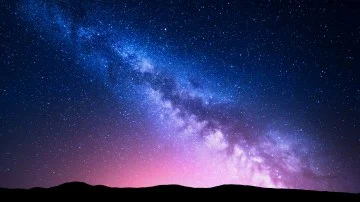
Spectacular Noctilucent Clouds Light Up June Skies: A Guide to Spotting These ‘Night-Shining’ Wonders
Get ready to witness a breathtaking celestial display! The noctilucent cloud season is upon us, offering a prime opportunity to observe these elusive "night-shining" clouds. These aren't your ordinary clouds; they reside in the mesosphere, approximately 50 miles (80 kilometers) above Earth, and glow with a spectral blue hue as they reflect sunlight in the twilight hours.
What are Noctilucent Clouds?
Noctilucent clouds (NLCs) are delicate wisps of icy particles that form in the mesosphere, a frigid layer of the atmosphere far above where typical clouds exist. According to Space.com, they consist of ice crystals that form around tiny dust particles, some of which may be remnants of meteors, volcanic eruptions, or even pollution.

When and Where to Spot Them
The best time to observe noctilucent clouds is on clear nights from late May to mid-August, specifically 90 to 120 minutes after sunset or before sunrise, with June and July being the peak months. They are most commonly seen at northern latitudes between 45 and 80 degrees north, including parts of the U.S. like North Dakota, Montana, and Washington. However, in recent years, they've been observed at lower latitudes, a shift potentially linked to climate change and increased rocket launches, according to the Royal Museums Greenwich.

Astronomy in June: More Than Just NLCs
While noctilucent clouds are a highlight, June's night sky has more to offer for patient observers. Despite shorter nights due to the solstice, those who venture away from city lights can witness the stunning southern Milky Way, particularly through the constellations Sagittarius and Scorpius. Look for Antares, the red supergiant in Scorpius, and explore the rich starfields with binoculars, revealing clusters and nebulae.
Mercury is best viewed mid-month in the evening sky, while Venus shines brightly before sunrise. On June 18th and 19th, the half Moon will be near Saturn in the morning sky, with faint Neptune nearby (telescope required).

Why are Noctilucent Clouds Becoming More Common?
Interestingly, there's evidence suggesting that these mesmerizing clouds are becoming more frequent. Some theorize that increased satellite re-entry debris contributes to their formation, while others believe we're simply getting better at observing and documenting them.
Whether you're an avid astronomer or a casual observer, June presents an amazing opportunity to witness the ethereal beauty of noctilucent clouds. Venture out on a clear night, look west after sunset or east before dawn, and let the "night-shining" wonders captivate you.
Have you ever spotted noctilucent clouds? Share your experiences and observations in the comments below!